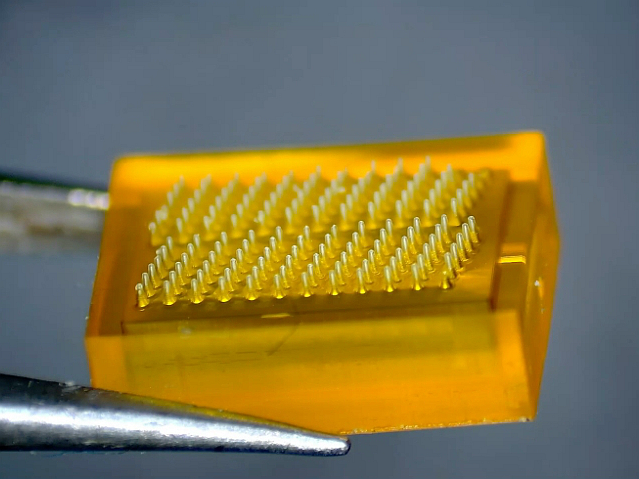Digital Light Processing (DLP) 3D Printing: What You Need to Know
Digital Light Processing (DLP) is a powerful and exact 3D printing technology that uses light to cure liquid resin into solid parts layer by layer. Similar to Stereolithography (SLA), DLP offers high-resolution prints, but with key differences in how the light is projected and the speed of the process. DLP uses a digital projector to flash an image of the part layer onto the resin, curing it instantly. This makes DLP 3D printing ideal for applications requiring precision and speed.
This guide will explore the DLP 3D printing process, its advantages, materials, applications, and why it's a top choice for industries like medical, automotive, and consumer electronics.
How DLP 3D Printing Works
DLP technology works by curing photosensitive resin with light. Unlike other 3D printing technologies, such as Fused Deposition Modeling (FDM), which extrudes filament, DLP uses a light source to harden liquid resin. The process begins with a digital model sliced into thin layers. A digital projector flashes an image of each layer onto the resin bath, causing it to harden in specific areas. This process is repeated layer by layer until the entire part is complete.
Unlike SLA, which uses a single laser to cure each point, DLP utilizes a full projector screen to heal an entire layer simultaneously. This makes DLP much faster than SLA, especially when printing large or complex parts.
The DLP 3D Printing Process
1. Material Preparation
The DLP process starts with a liquid photosensitive resin, which is available in a wide variety of formulations. Typical resins used in DLP printing include standard for prototyping, tough resins for engineering parts, and castable resins for jewelry and dental applications. The resin is placed in a vat that serves as the build surface for the part.
2. Projecting the Light
The process begins with a digital projector that shines light onto the resin. The light is directed through a digital mask, which determines the shape of the first layer. The light immediately hardens this layer. The build platform then moves up slightly to allow the next layer to be projected and cured. The process repeats until the part is fully formed.
3. Layer-by-Layer Construction
Each layer is built on top of the last, with the projector curing the resin faster than other methods. The resolution of the print can vary depending on the projector's capabilities, with layer thickness typically ranging from 25 to 100 microns. The fast curing speed and high resolution make DLP ideal for creating detailed models and prototypes.
4. Post-Processing
Once the print is complete, parts must be removed from the build platform and cleaned to remove any excess resin. This is often done using isopropyl alcohol (IPA) or a specialized wash solution. After cleaning, parts typically undergo post-curing under ultraviolet (UV) light to ensure the material reaches its full strength and durability.
Advantages of DLP 3D Printing
Speed: DLP is faster than SLA printing because it cures an entire layer simultaneously, rather than point-by-point. This makes DLP an ideal choice for high-volume production or large parts.
High Resolution: DLP printers can produce parts with outstanding detail. The resolution typically ranges from 25 to 50 microns, which makes it perfect for industries that require intricate features.
Material Variety: DLP supports a variety of resin materials, including standard, rigid, flexible, and castable resins. This versatility allows manufacturers to choose the ideal material for their specific application.
Accuracy: DLP technology offers excellent accuracy, producing high-quality parts and smooth surface finishes, often reducing the need for additional post-processing.
Materials Used in DLP 3D Printing
DLP 3D printing supports various resin types, each tailored for specific applications. Here's a comparison table highlighting some of the most commonly used resins in DLP printing:
Material | Properties | Applications |
|---|---|---|
Rigid, smooth finish, ideal for detailed models | Prototyping, concept models, visual aids | |
Impact-resistant, durable | Functional prototypes, automotive parts, mechanical testing | |
Burns cleanly, ideal for investment casting | Jewelry, dental applications, casting patterns | |
Biocompatible, precision detail | Dental crowns, bridges, aligners |
Common Applications of DLP 3D Printing
DLP 3D printing is used in various industries for both prototyping and production. Its high-resolution and fast printing capabilities make it a go-to technology for several applications:
Prototyping: DLP is widely used for prototyping due to its speed and precision. Engineers and designers use DLP to create functional prototypes that can be tested in real-world conditions.
Jewelry and Fashion: DLP is especially popular in the jewelry industry for creating detailed wax models used in investment casting. The high resolution ensures that even the most minor details are accurately replicated.
Dental: DLP has revolutionized the dental industry by providing a fast and accurate method for creating custom dental implants, crowns, and orthodontic devices. Dental resins offer biocompatibility and precision, essential for medical applications.
Automotive: DLP is used to create high-precision parts and prototypes in the automotive industry. The ability to produce durable parts with intricate details makes DLP a valuable tool for designing car components, testing parts, and creating custom jigs and fixtures.
Why Choose DLP 3D Printing?
Digital Light Processing (DLP) 3D printing is an excellent choice for quickly creating high-resolution models and prototypes. The speed of the process, combined with its exceptional accuracy, makes it ideal for industries that require fine details and precision. Whether you're in jewelry, automotive, or healthcare, DLP provides a reliable solution for producing intricate parts, prototypes, and end-use components.
To learn more about DLP 3D printing and other 3D printing technologies, visit our website.
FAQs:
How does DLP 3D printing differ from SLA and FDM?
What materials are available for DLP 3D printing?
How accurate is DLP 3D printing compared to other methods?
Can DLP be used for both prototyping and production?
What are the benefits of using DLP in the jewelry industry?

